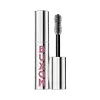What's inside
What's inside
 Key Ingredients
Key Ingredients

 Benefits
Benefits

 Concerns
Concerns

 Ingredients Side-by-side
Ingredients Side-by-side

Water
Skin ConditioningBeeswax
Emulsion StabilisingCopernicia Cerifera Wax
Oryza Sativa Bran Wax
Skin ConditioningStearic Acid
CleansingPalmitic Acid
EmollientButylene Glycol
HumectantC18-36 Acid Triglyceride
EmollientHydrogenated Polyisobutene
EmollientAminomethyl Propanol
BufferingAcacia Senegal Gum
MaskingPvp
Emulsion StabilisingSea Water
HumectantCaprylyl Glycol
EmollientHydroxyethylcellulose
Emulsion StabilisingDimethicone
EmollientAcrylates Copolymer
Myristic Acid
CleansingLauric Acid
CleansingOleic Acid
EmollientSodium Chloride
MaskingCitric Acid
BufferingMagnesium Chloride
Propylene Glycol
HumectantDisodium Phosphate
BufferingSodium Phosphate
BufferingPolysorbate 60
EmulsifyingSea Salt
AbrasiveSodium Dehydroacetate
PreservativeSodium Benzoate
MaskingPotassium Sorbate
PreservativePhenoxyethanol
PreservativeIron Oxides
Water, Beeswax, Copernicia Cerifera Wax, Oryza Sativa Bran Wax, Stearic Acid, Palmitic Acid, Butylene Glycol, C18-36 Acid Triglyceride, Hydrogenated Polyisobutene, Aminomethyl Propanol, Acacia Senegal Gum, Pvp, Sea Water, Caprylyl Glycol, Hydroxyethylcellulose, Dimethicone, Acrylates Copolymer, Myristic Acid, Lauric Acid, Oleic Acid, Sodium Chloride, Citric Acid, Magnesium Chloride, Propylene Glycol, Disodium Phosphate, Sodium Phosphate, Polysorbate 60, Sea Salt, Sodium Dehydroacetate, Sodium Benzoate, Potassium Sorbate, Phenoxyethanol, Iron Oxides
Water
Skin ConditioningAcrylates Copolymer
Kaolin
AbrasiveCopernicia Cerifera Wax
PEG-15 Glyceryl Stearate
EmulsifyingSilica
AbrasiveButylene Glycol
HumectantAlcohol
AntimicrobialHydrogenated Rapeseed Alcohol
EmollientPolyvinyl Alcohol
Bentonite
AbsorbentDimethicone
EmollientStearic Acid
CleansingSucrose Distearate
EmollientVp/Va Copolymer
Simmondsia Chinensis Seed Oil
EmollientNylon-66
Simethicone
EmollientAminomethyl Propanediol
BufferingAminomethyl Propanol
BufferingXanthan Gum
EmulsifyingTocopherol
AntioxidantPhenoxyethanol
PreservativeChlorphenesin
AntimicrobialSodium Dehydroacetate
PreservativeIron Oxides
CI 77891
Cosmetic ColorantCI 77742
Cosmetic ColorantCI 19140
Cosmetic ColorantCI 77288
Cosmetic ColorantCI 77289
Cosmetic ColorantCI 75470
Cosmetic ColorantCI 77163
Cosmetic ColorantCI 42090
Cosmetic ColorantCI 77007
Cosmetic ColorantWater, Acrylates Copolymer, Kaolin, Copernicia Cerifera Wax, PEG-15 Glyceryl Stearate, Silica, Butylene Glycol, Alcohol, Hydrogenated Rapeseed Alcohol, Polyvinyl Alcohol, Bentonite, Dimethicone, Stearic Acid, Sucrose Distearate, Vp/Va Copolymer, Simmondsia Chinensis Seed Oil, Nylon-66, Simethicone, Aminomethyl Propanediol, Aminomethyl Propanol, Xanthan Gum, Tocopherol, Phenoxyethanol, Chlorphenesin, Sodium Dehydroacetate, Iron Oxides, CI 77891, CI 77742, CI 19140, CI 77288, CI 77289, CI 75470, CI 77163, CI 42090, CI 77007
Ingredients Explained
These ingredients are found in both products.
Ingredients higher up in an ingredient list are typically present in a larger amount.
Acrylates Copolymer is used as a film-forming agent and texture enhancer.
After applied, Acrylates Copolymer forms a thin film cover that helps skin feel more soft. It can help sunscreens become more water-resistant.
It is also used to make a product more thick.
Learn more about Acrylates CopolymerAminomethyl Propanol is used to adjust the pH of products. It is also used as a base to create other organic compounds. Having a balanced pH is important for protecting your skin.
Aminomethyl propanol is safe to use in cosmetics up to 1%. It is soluble in water.
Butylene Glycol (or BG) is used within cosmetic products for a few different reasons:
Overall, Butylene Glycol is a safe and well-rounded ingredient that works well with other ingredients.
Though this ingredient works well with most skin types, some people with sensitive skin may experience a reaction such as allergic rashes, closed comedones, or itchiness.
Learn more about Butylene GlycolCopernicia Cerifera Wax comes from a palm tree native to Brazil; another name for this ingredient is Carnauba Wax.
This ingredient is used to thicken texture and also leaves behind a film when applied.
Fun fact: This wax has the highest melting point of all natural waxes and low solubility.
Learn more about Copernicia Cerifera WaxDimethicone is a type of synthetic silicone created from natural materials such as quartz.
What it does:
Dimethicone comes in different viscosities:
Depending on the viscosity, dimethicone has different properties.
Ingredients lists don't always show which type is used, so we recommend reaching out to the brand if you have questions about the viscosity.
This ingredient is unlikely to cause irritation because it does not get absorbed into skin. However, people with silicone allergies should be careful about using this ingredient.
Note: Dimethicone may contribute to pilling. This is because it is not oil or water soluble, so pilling may occur when layered with products. When mixed with heavy oils in a formula, the outcome is also quite greasy.
Learn more about DimethiconePhenoxyethanol is a preservative that has germicide, antimicrobial, and aromatic properties. Studies show that phenoxyethanol can prevent microbial growth. By itself, it has a scent that is similar to that of a rose.
It's often used in formulations along with Caprylyl Glycol to preserve the shelf life of products.
This ingredient is a preservative with antimicrobial properties. It is the sodium salt of dehydroacetic acid.
It is especially effective at preventing bacterial and fungal growth in low concentrations.
Stearic Acid is a fatty acid. It is an emollient, emulsifier, and texture enhancer.
As an emollient, stearic acid helps soften skin. It aids the skin's protective barrier by preventing water loss. It also provides a gentle cleansing effect without stripping away natural oils.
Stearic acid may also be used to enhance the texture of products. It can add volume and stabilize ingredients such as water and oil. This can help water and oil ingredients from separating.
Sources of stearic acid include animal or vegetable fats/oils such as coconut or shea. It can be naturally found in butter, cocoa butter, shea butter, vegetable fats, and animal tallow.
This ingredient may not be Malassezia folliculitis, or fungal-acne safe.
Learn more about Stearic AcidWater. It's the most common cosmetic ingredient of all. You'll usually see it at the top of ingredient lists, meaning that it makes up the largest part of the product.
So why is it so popular? Water most often acts as a solvent - this means that it helps dissolve other ingredients into the formulation.
You'll also recognize water as that liquid we all need to stay alive. If you see this, drink a glass of water. Stay hydrated!
Learn more about WaterThis ingredient is a combination of red, black, and yellow iron oxide pigments. This combination of colors is usually found in foundation, because it results in a "skin" color.